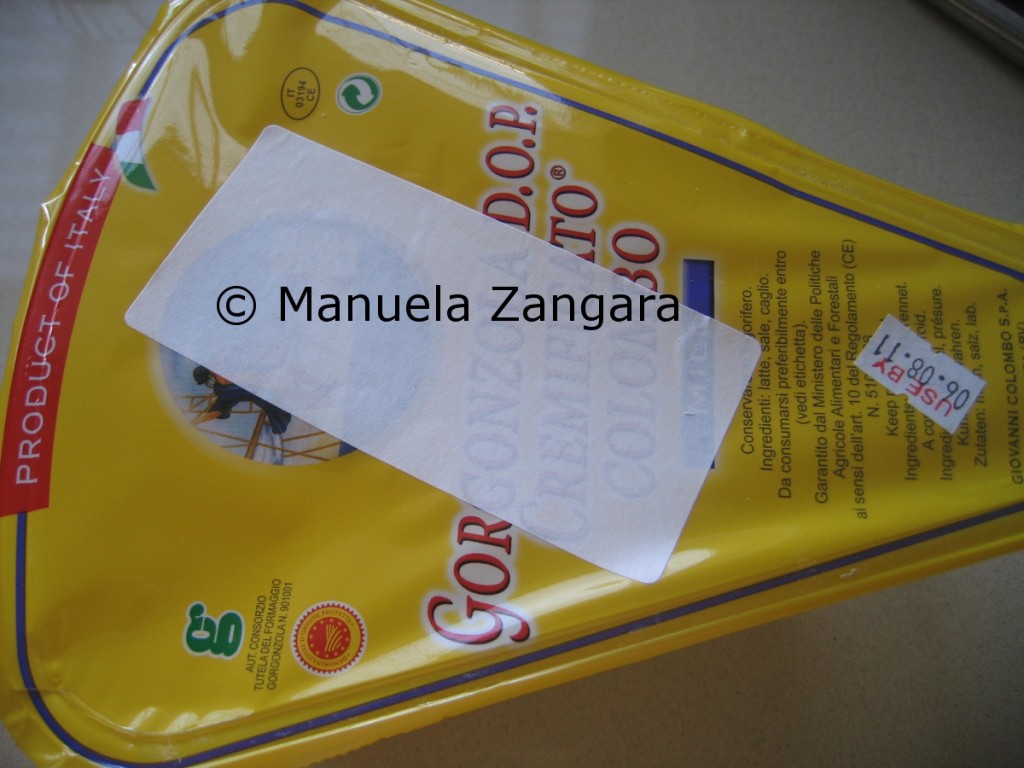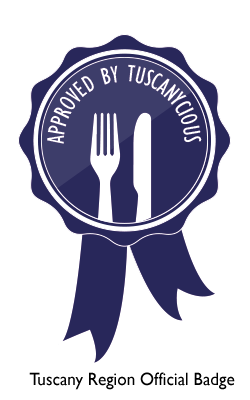Italian cooking is often pretty simple and the quality of the ingredients used is paramount. When you use only 2 or 3 ingredients in a dish, they need to be good ones in order to enjoy all their flavour. You should only use extra virgin olive oil as a sauce for your pasta and if you use a good quality one, it will taste delicious.
Another thing about Italian cooking is that it is “region-based”. Each area of Italy has traditions, dialects, produce and dishes that are unique. The best results are achieved by using regional products for regional dishes. Unfortunately, this is not always possible, especially if you do not live in Italy. There are however many basic Italian products that are widely available around the world. And I always recommend that people try them out and taste the difference for themselves.
When I first moved to Australia, l did not know where to find Italian goods, so I had a few food “adventures”… the most memorable of all was with Pecorino cheese. I went to an Italian grocer and asked for a piece of Pecorino to the lady at the counter. When I went home and tasted it, I had a bad surprise… suffice it to say that I just could not bring myself to use it! When I went back to the shop, I asked them what Pecorino they were selling and they told me that it was a local one and not an imported (ie. Italian) one. To top it all, the lady added that it was made with cow’s milk! Now, you may not know this, but “Pecorino” means “of sheep”… so it MUST be made with sheep’s milk! This new version was more a “Mucchino” (from mucca – cow) than a Pecorino! Well, this experience taught me a lesson and I now always ask for IMPORTED stuff when I go shopping for Italian goods. With that I am not trying to say that foreign products are not good… they just don’t taste the same and would make your dish taste very different to the original one.
In this page you will find a list of basic Italian products that l use in my recipes. I have added pictures so you can see what they look like. This will help you to recognise the “real deal” and not be talked into an imitation. If you do not live in Italy, it will cost you a little extra money like all imported goods, but I can guarantee you that it is worthwhile and it will change the way you enjoy Italian cuisine!
DAIRY
PARMIGIANO REGGIANO (Wiki)
This is probably the most famous Italian cheese and it definitely one of my all time favourites. It comes from the provinces of Reggio Emilia and Parma (and surrounding areas), in the region of Emilia Romagna. As you can see in the pictures, the original one has the name “Parmigiano Reggiano” written on its rind.
It is a PDO cheese (DOP in Italian), which means that only the Parmigiano Reggiano produced in a specific geographic area and that meets very precise and restrictive standards can be called and sold as “Parmigiano Reggiano”.
Its aging time varies between 12 to 36 months. The 12 month old is best to be eaten in pieces and it is a fantastic appetizer or the king of any cheese plate. Buy only 18 to 24 months aged Parmigiano Reggiano to grate it.
GRANA PADANO (Wiki)
This is probably the best substitute for Parmigiano Reggiano. Its taste is similar to the one of its more expensive and more famous big brother. It is produced over a large area in Northern Italy (Lombardy, Piedmont, Veneto and Trentino regions) mainly in the biggest Italian plains, the Padana plains (thus the name). The original Grana Padano has its name written on the rind. It is a DOC cheese which means that only the Grana Padano produced in a specific geographic area and that meets very precise and restrictive standards can be called and sold as “Grana Padano”. Its aging time varies between 9 to 20 months. The 9 month old is best eaten in pieces and it is great as an appetizer or served as part of a cheese plate. Buy only 12 to 20 months aged Grana Padano to grate it.
PECORINO ROMANO (Wiki)
This is a salty and hard sheep’s milk cheese, ideal for grating. It is a very old cheese, already produced at the times of the Roman Empire, and is now mainly produced in the regions of Sardinia, Tuscany and Lazio (where Rome is). The original Pecorino Romano has its name written on the rind.
It is a PDO cheese (DOP in Italian), which means that only the Pecorino Romano produced in a specific geographic area and that meets very precise and restrictive standards can be called and sold as “Pecorino Romano”. Its minimum aging time is 8 months for a grating Pecorino. It is mostly used in central and southern Italy as a substitute for Parmigiano Reggiano or Grana Padano and is a must on specific regional dishes of Rome, like Carbonara or Amatriciana.
MOZZARELLA (Wiki)
There are mainly 2 kinds of mozzarellas:
- Di bufala (Wiki) – made with water buffalo’s milk. This is a PDO cheese (DOP in Italian), which means that only the mozzarella di Bufala produced in a specific geographic area and that meets very precise and restrictive standards can be called and sold as “mozzarella di Bufala campana”. It is produced in very specific areas of the regions of Campania, Lazio and Puglia. Its taste is much stronger and intense than the cow’s milk mozzarella. It is best eaten plain, but it can also used on pizza or on other baked dishes (but NOT in Lasagne).
- Fior di latte (Wiki) – made with cow’s milk. This is the most common variety and is produced everywhere in Italy. It has a very mild milky flavor and is a semi soft cheese. This is the type used in dishes like Lasagne or other baked dishes and often also in pizzas.
Bocconcini – are small Fior di latte mozzarellas.
RICOTTA (Wiki)
This is one of the most popular cheeses of Italy. You can use it to make savoury dishes and sweets (like cannoli siciliani) or you can eat it plain. It is light and easily digestible and for this reason it is often given to children. It can be made either with sheep’s milk (especially in the south) or cow’s milk (in the north). It can also be:
- Smoked – this version is called ricotta affumicata and it has a grey crust.
- Baked – this version is called ricotta infornata and it has a brownish crust.
- Salted – this version is called ricotta salata and it is used for grating or shaving. It has a strong flavour and it is quite creamy in texture.
GORGONZOLA (Wiki)
This is definitely my favourite cheese. It is a blue cheese and was very likely originally produced in a town called Gorgonzola, near Milan. Nowadays, it is produced over a large area in some (but not all) provinces of Lombardy and Piedmont. It is a DOC cheese which means that only the Gorgonzola produced in a specific geographic area and that meets very precise and restrictive standards can be called and sold as “Gorgonzola”. The soft, creamy and sweeter version is made with cow’s milk, while the harder, more pungent one is made with goat’s milk.
PROVOLONE (Wiki)
It is a semi hard cheese made from cow’s milk. Originally from the south of Italy, it is now produced in the Northern areas of Italy. There are 2 versions: Provolone Piccante (piquant) and Provolone Dolce (mild). Here you can see a picture of it.
FONTINA (Wiki)
It is a cow’s milk cheese made in the region of Valle d’Aosta, in the Italian Alps. Its taste is much more intense than Fontal’s taste (produced in other areas of Europe). It is a PDO cheese which means that only the Fontina produced in a specific geographic area and that meets very precise and restrictive standards can be called and sold as “Fontina”. The more it ages, the stronger and pungent its flavor.
STRACCHINO/CRESCENZA (Wiki)
It is a cow’s milk cheese made in the region of Lombardy, in northern Italy. It is eaten young and has a soft, creamy texture. It has a very delicate and mild flavour. It is normally square in form. It is a PDO cheese which means that only the Stracchino produced in a specific geographic area and that meets very precise and restrictive standards can be called and sold as “Stracchino”.
SQUACQUERONE (Wiki in Italian)
It is a very soft and spreadable cheese made of cow’s milk. It is similar in taste to stracchino, but it is much softer. It is mainly produced in the area of Romagna in the region of Emilia Romagna and it is often used to fill piadina bread.
TALEGGIO (Wiki)
It is a soft cow’s milk cheese made and named after Taleggio Valley (Val Taleggio) in the Italian Alps. It has a very strong aroma, but it is rather mild in flavour. It is a PDO cheese which means that only the Taleggio produced in a specific geographic area and that meets very precise and restrictive standards can be called and sold as “Taleggio”.
PRIMOSALE (Wiki)
It is a young Pecorino cheese – a sheep milk cheese aged only 1 month.
CURED MEATS
PROSCIUTTO CRUDO (Wiki)
The English term prosciutto refers to the Italian “prosciutto crudo”, a dry-cured ham that is usually sliced VERY thin and is served uncooked.
It is a PDO cured meat (DOP in Italian), which means that only Prosciutto Crudo produced in a specific geographic area and that meets very precise and restrictive standards can be called and sold as “Prosciutto Crudo of (followed by the name of the area)”.
The main areas where prosciutto crudo is produced are Friuli and Emilia and the most renowned ones are those of Parma (Emilia) and San Daniele (Friuli-Venezia Giulia).
GUANCIALE (Wiki)
As you can see from the picture, it is an unsmoked bacon made from the pig’s cheeks (its name comes from guancia that means cheek in Italian). It is typical of central Italy and especially of the regions of Umbria and Lazio and is the main ingredients of dishes like Carbonara and Amatriciana. It is similar to pancetta, but stronger in taste.
PANCETTA (Wiki)
It is an unsmoked bacon made from the pig’s belly (its name comes from pancia that means belly in Italian). It can be rolled or straight. The rolled one comes also with a less fatty version, called pancetta coppata. It is a typical Italian cured meat produced throughout the country. It is similar to guanciale, but more delicate in flavour.
LARDO (Wiki)
It is a cured meat made of cured fatback. The most famous and sought after
ones are Lardo di Colonnata (from Tuscany) – a PGI cured meat, and Lard d’Arnad (from Valle d’Aosta) – a PDO cured meat, which means that only those lards produced in that specific geographic area and that meet very precise and restrictive standards can be called and sold as “Lardo di Colonnata” and “Lard d’Arnad”.
SPECK (Wiki)
It is a juniper flavoured, cured and smoked prosciutto originally from Tyrol (a region that lies between Italy and Austria), as you can see in here. It can be eaten sliced in sandwiches or cooked in many dishes. It is a PGI cured meat, which means that only the Speck produced in a specific geographic area (Italian Alto Adige region) and that meets very precise and restrictive standards can be called and sold as “Speck Alto Adige”.
BRESAOLA (Wiki)
It is a lean cured meat made from beef and it is typical of Valtellina (a valley of the Alps). It can be eaten sliced in sandwiches or salads and it is usually served as an entree. It is a PGI cured meat, which means that only the Bresaola produced in a specific geographic area (Valtellina) and that meets very precise and restrictive standards can be called and sold as “Bresaola”.
MORTADELLA (Wiki)
Is a large Italian sausage made with finely ground and cured pork and small cubes of fat. It is usually flavored with spices like whole or ground black pepper, myrtle and pistachios. The Italian mortadella is usually described as Mortadella Bologna (from the name of the city where it is mostly produced) and it is a PGI cured meat, which means that only the Mortadella produced in a specific geographic areas (Emilia-Romagna, Piedmont, Lombardy, Veneto, Marche and Tuscany, Lazio and Trentino) and that meets very precise and restrictive standards can be called and sold as “Mortadella Bologna”.
VEGETABLES
RADICCHIO (Wiki)
It is a leaf chicory with white-veined red leaves. It is bitter and spicy in taste. There are many varieties of radicchio and are named after the Italian regions from where they originate:
Radicchio di Chioggia (the most common variety grown outside of Italy) which is maroon and round.
Radicchio di Treviso which is similar in shape to a large Belgian endive.
Radicchio Tardivo and the white Radicchio di Castelfranco, both of which resemble a flower.

























This site makes me want to cook Italian every night! Yum!